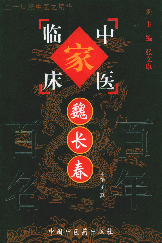
主要责任者: 王真;张弘,王新华
责任方式: 主编;副主编
出版者: 中国中医药出版社
出版地: 北京
字数: 224 千字
页码: 310
开本: 32
中图分类号: R249.7
装帧: 简
语种:中
定价:14.00
出版时间:2004-01
丛书多卷书否:是
丛书名:中国百年百名中医临床家丛书
丛书责任者:张文康;佘靖,李振吉
丛书责任方式:主编;副主编
书目简介:本册工具书是中国百年百名中医临床家丛书之一,共收录155条词条。
被引频次:5
| 词条 | 魏长春 |
| 类别 | 中文百科知识 |
| 释义 |  主要责任者: 王真;张弘,王新华 责任方式: 主编;副主编 出版者: 中国中医药出版社 出版地: 北京 字数: 224 千字 页码: 310 开本: 32 中图分类号: R249.7 装帧: 简 语种:中 定价:14.00 出版时间:2004-01 丛书多卷书否:是 丛书名:中国百年百名中医临床家丛书 丛书责任者:张文康;佘靖,李振吉 丛书责任方式:主编;副主编 书目简介:本册工具书是中国百年百名中医临床家丛书之一,共收录155条词条。 被引频次:5 |
| 随便看 |
开放百科全书收录579518条英语、德语、日语等多语种百科知识,基本涵盖了大多数领域的百科知识,是一部内容自由、开放的电子版国际百科全书。